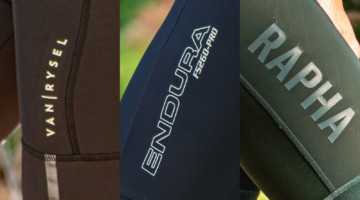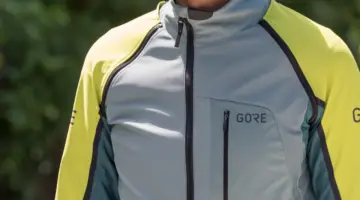Dressing for cyclocross when it’s cold and muddy can be a tricky thing.
There are a lot of variables that go into determining what you’ll want to wear. And I feel that ’cross is unique in that we spend a lot of time preparing for something that may have happened once, ever, in the past that caught everyone unaware.
’Cross is a sport that rewards both experience as well as an ability to learn quickly. That applies to what you wear as much as it does how you ride a tricky off-camber. I’d like to lay out some ways to shorten your learning curve and pass on some hard-earned tips from my own experience.
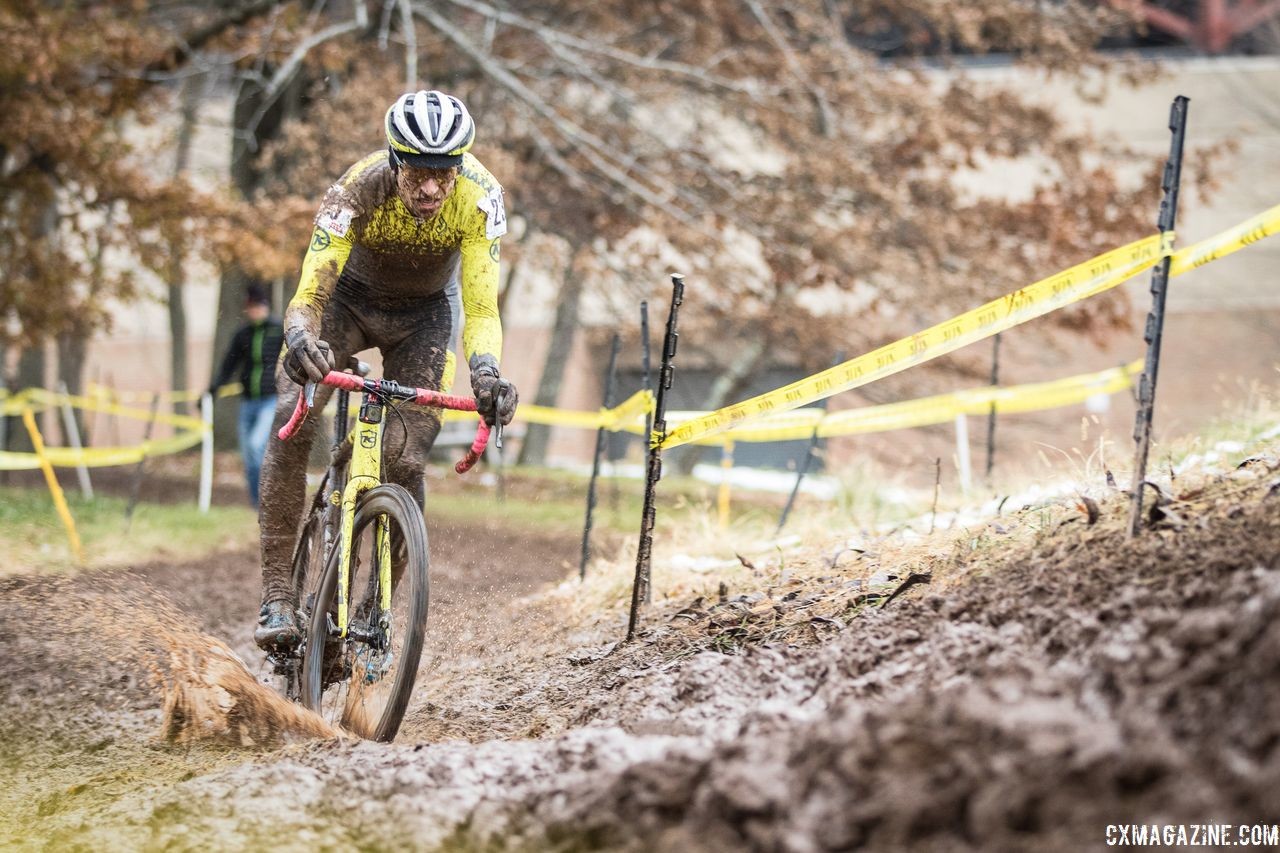
When conditions get ugly, having the right clothing is essential. 2018 Rockland County Supercross Cup Day 2. © Angelica Dixon
Shortening the Attire Learning Curve
How do you shorten your learning curve?
First, start keeping a written log of what you wear. I still consult mine from time to time. There’s good evidence that the act of writing ingrains things in a way that typing does not. Every race, record the weather conditions, what you wore and how it worked out for you. You’ll quickly generate a good reference source.
Secondly, look around at what other people are wearing. I mean the experienced people who have been doing it for a few years. It’s at least a good rough guide to long versus short sleeve or how much of a base layer you need.
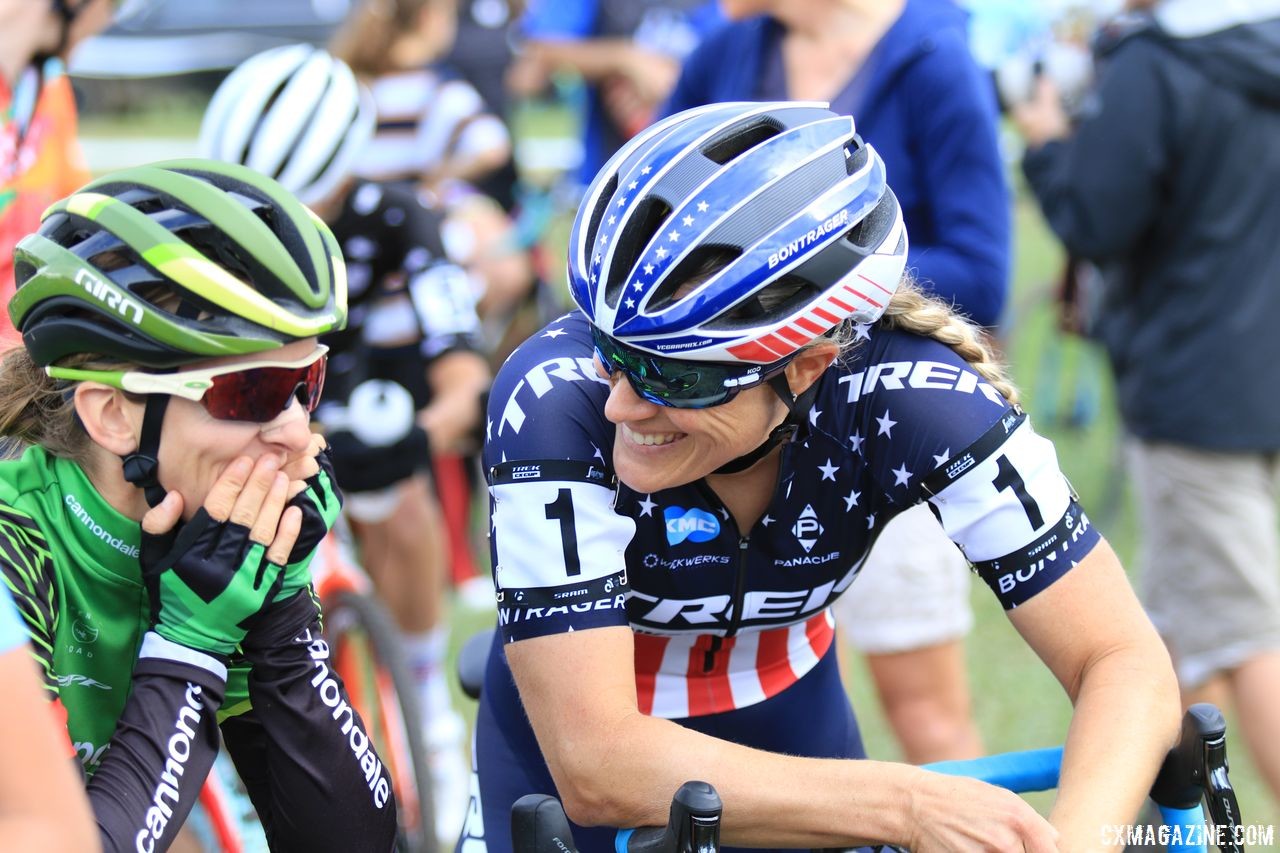
Check out what others are wearing at the start line. 2018 Trek CX Cup, Waterloo © Cyclocross Magazine / D. Mable
Speaking of which, what base layer to wear (or not) should be your first question. Your body prioritizes keeping the core warm above all else.
On the topic of your core, unzip your skinsuit an inch or two before your race. Most zippers will stick at the ends of their travel. Once you get them started they function pretty freely. Unzipping an inch or two means you can make heat regulating adjustments on the fly during your race with minimal hassle.
Something I didn’t learn until a year or two ago is that zipper pulls on really nice clothing (e.g. Rapha, Castelli) will lock into place and then all you have to do to unzip them is tug at the zipper itself. If you’re blessed with that, unzip the piece an inch or two and then lock the zipper pull into position for ease of use.
If you can get in the habit of warming up in clothes you don’t race in, that’s a big plus. Let those clothes take the brunt of a muddy warm up. Showing up to the line in clean, dry clothes is a huge creature comfort that can mean a lot on a cold day, especially if staging takes a while.
Overdress for your warm-up and use zippers to regulate your body heat as needed. I travel with a spare winter helmet that’s a tad larger than my normal helmet so I can fit a thick wool hat under it. I also have winter cycling boots I’ll warm up in. Don’t go out and buy those just for ’cross, but have them in mind next time you make a purchase. Hold onto your old shoes if nothing else.
I also like to keep my proof of license in my pocket during warm-up so I can go straight to registration when my first course inspection window closes.
When You Hit the Line
When you do get ready to race, start with as dry a body as possible and layer up again. I’ll often wear a jacket and long sleeve jersey to the line. Zip-off warm-up pants are incredibly nice, but also a single-use item—you generally won’t wear them for normal riding. Still, they are clutch if you get the chance to buy some.
Wear warmer gloves to the line as well and tuck your race gloves into the front of your top so you won’t forget to put them on (out of sight in a back pocket often means out of mind.)
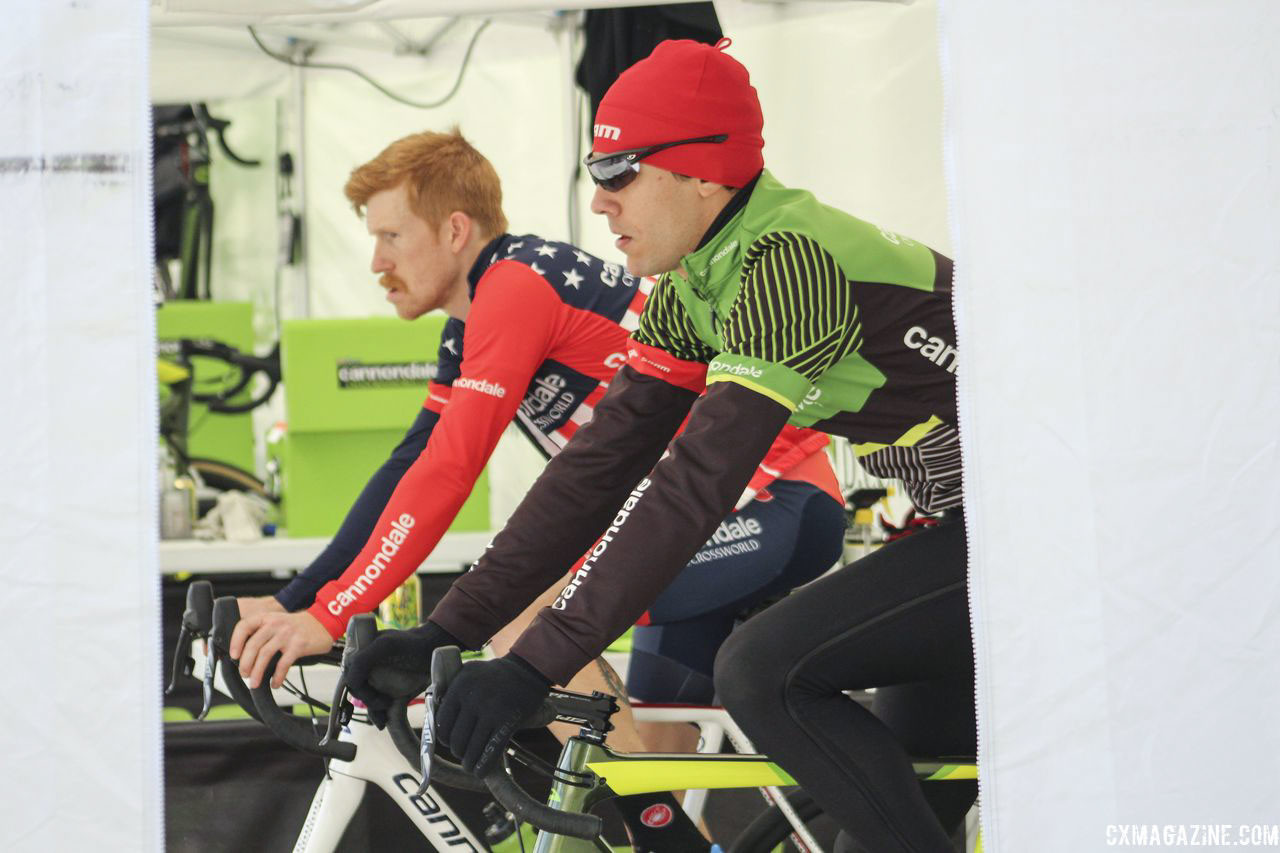
Try to stay warm as long as you can before the race starts. 2018 Pan-American Cyclocross Championships, Midland, Ontario. © Z. Schuster / Cyclocross Magazine
Oversock shoe covers are a nice way to get your feet and shoes to the line clean and dry as well. That said, whatever you wear to the line, have a plan for getting them off quickly and easily. I’ve seen—and experienced—struggling with getting tights off on the line. I’ve stopped wearing a neck gaiter/buff/snood to the line because of the hassle of getting my helmet and glasses on and off with race nerves.
That said, I had a nice talk with someone this weekend about snoods and how they can help with asthma issues. It might be worth experimenting in practice if that’s an issue for you.
Arm and leg warmers are always a tricky issue. You may not have a long sleeve top to race in and that’s fine! Put a safety pin through your top into the arm warmer to keep them from falling down. That is unless you plan to pull them down in the race.
Leg warmers can be tricky business too. If it’s cold and dry they can be a great idea in cold temperatures. If it’s wet out, they can often hold a lot of cold water right next to your legs, such that bare legs would actually be the better choice.
If you do wear leg warmers, put a pin into your shorts and through the leg warmers to hold them on. They are notorious for falling down in races, especially when running. Knee warmers seem a bit less susceptible to this but better safe than sorry there. Pin placement for any type of warmer is a small, but important detail. Try to avoid pinning areas that you’re likely to land or slide on if you crash.
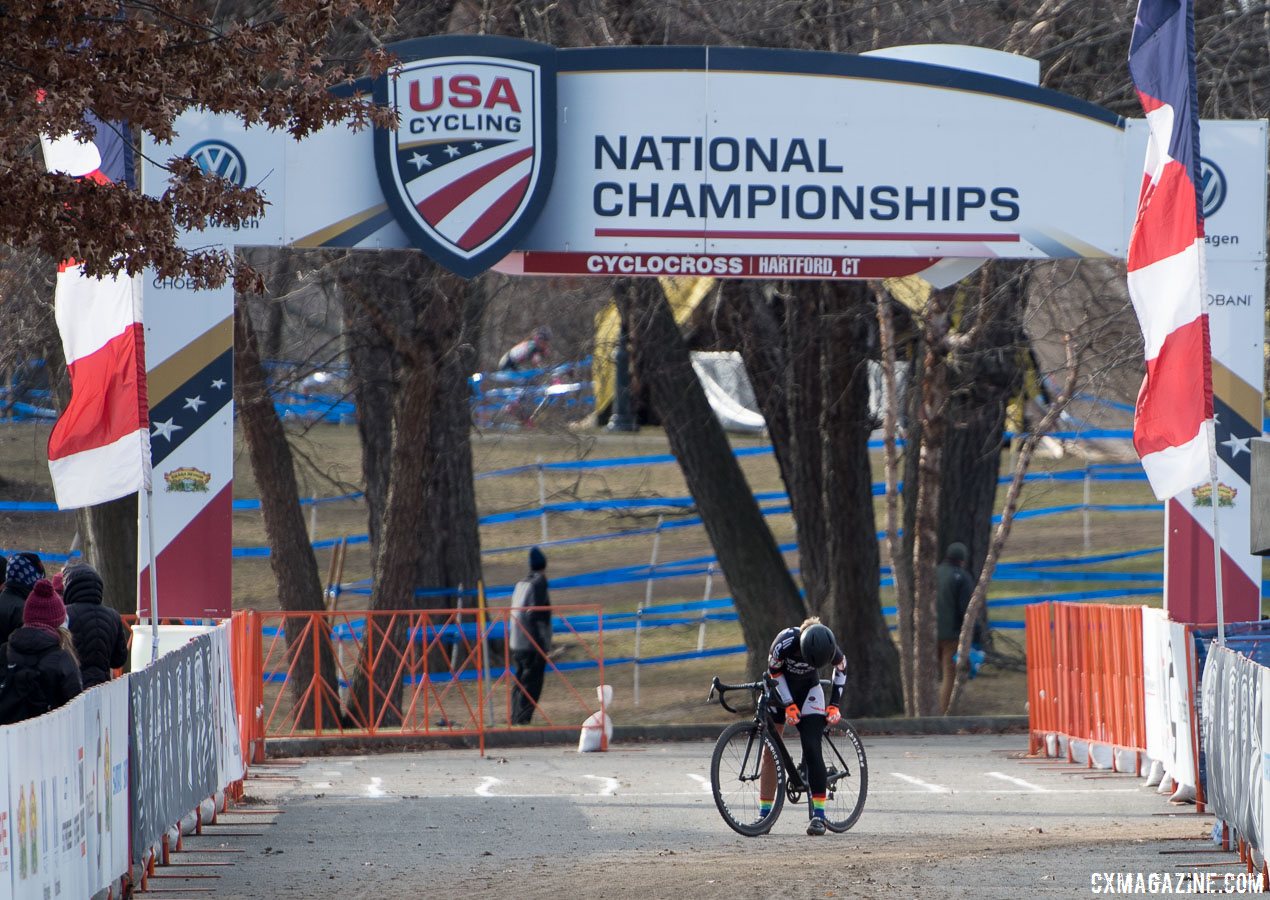
Leg warmers are notorious for falling down. 2017 Cyclocross National Championships, Masters Women 35-39. © A. Yee / Cyclocross Magazine
People often use embrocation as a cold weather buffer. I think it’s a phase we all go through, but you should try it at least once just to know what it’s about.
Ultimately, I’m not a fan of it. It’s hard to apply, it’s a skin irritant (by design), it lasts far longer than you want it to and it degrades lycra very quickly with just a few washes.
I’ll use non-warming embro if it’s cold and wet as a barrier against water, but otherwise I stay away from it. If you do use it, always remember, chamois first, then embro. It’s a mistake you’ll only make once. If you do make that mistake, throw some leg warmers on, then put your chamois on. That’ll cover most of what you’ve applied. To remove embro, use a spray bottle full of rubbing alcohol and a towel or washcloth.
While not strictly clothing-related, get some toe spikes. Muddy run-ups are nearly impossible without them, and it’s a common pitfall in lower category races. Most shoes now come with them, make sure when you’re purchasing shoes that they have holes for them (some lower end models don’t). Horst Engineering makes some of the best but using the ones you already have is a great start.
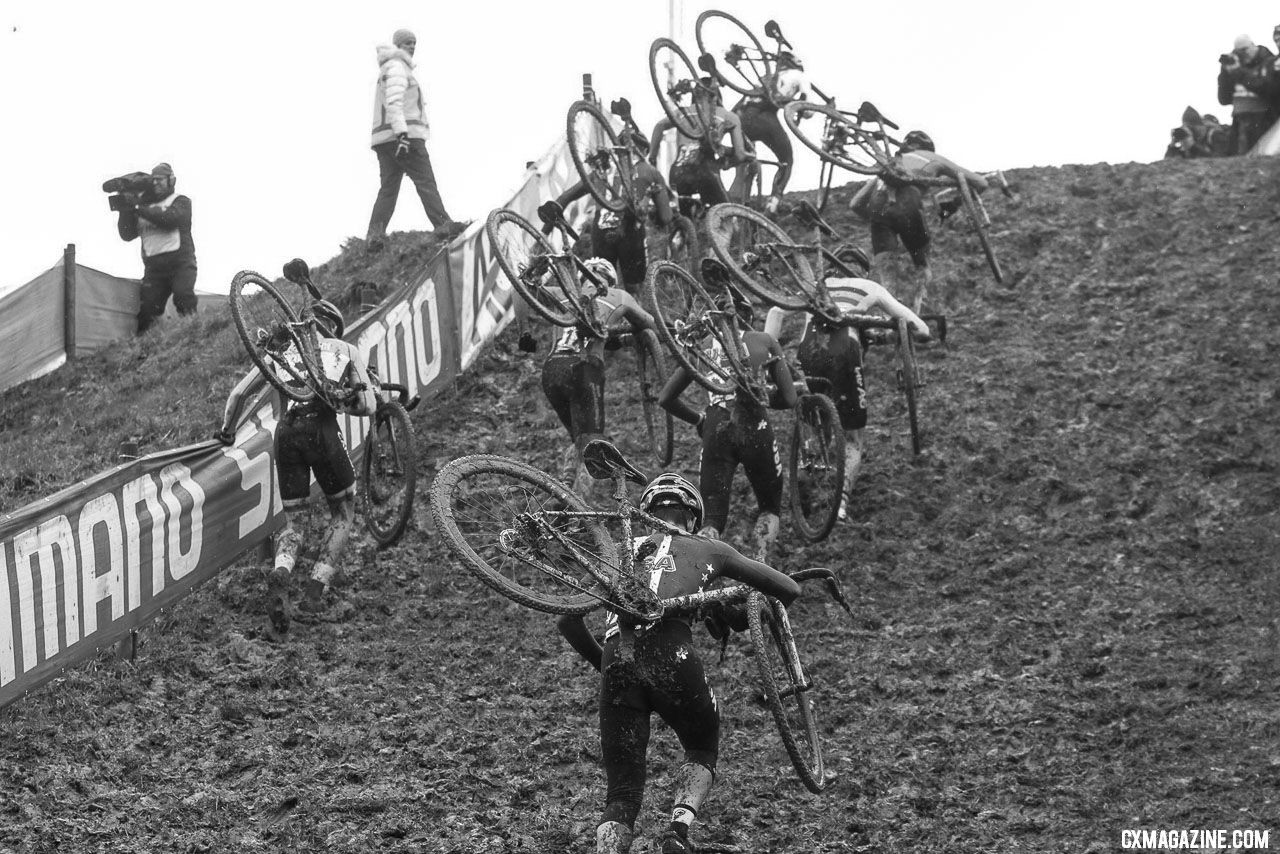
Toe spikes are a must at some races. Junior Men. 2018 UCI Cyclocross World Championships, Valkenburg-Limburg, The Netherlands. © Bart Hazen / Cyclocross Magazine
Clothing is critical to success in ’cross. But as ’cross racers we have to deal with a wide variety of courses and weather conditions. It can be hard to know exactly how to dress for every variable, especially if you haven’t raced in those exact conditions before or maybe only once long ago.
Keep a log to record your own experiences. Let other people do some of the problem solving for you and apply their results to your situation. And hopefully I’ve laid out some good tips for you here as well.
Good luck and embrace the winter!
Featured image: Bart Hazen























